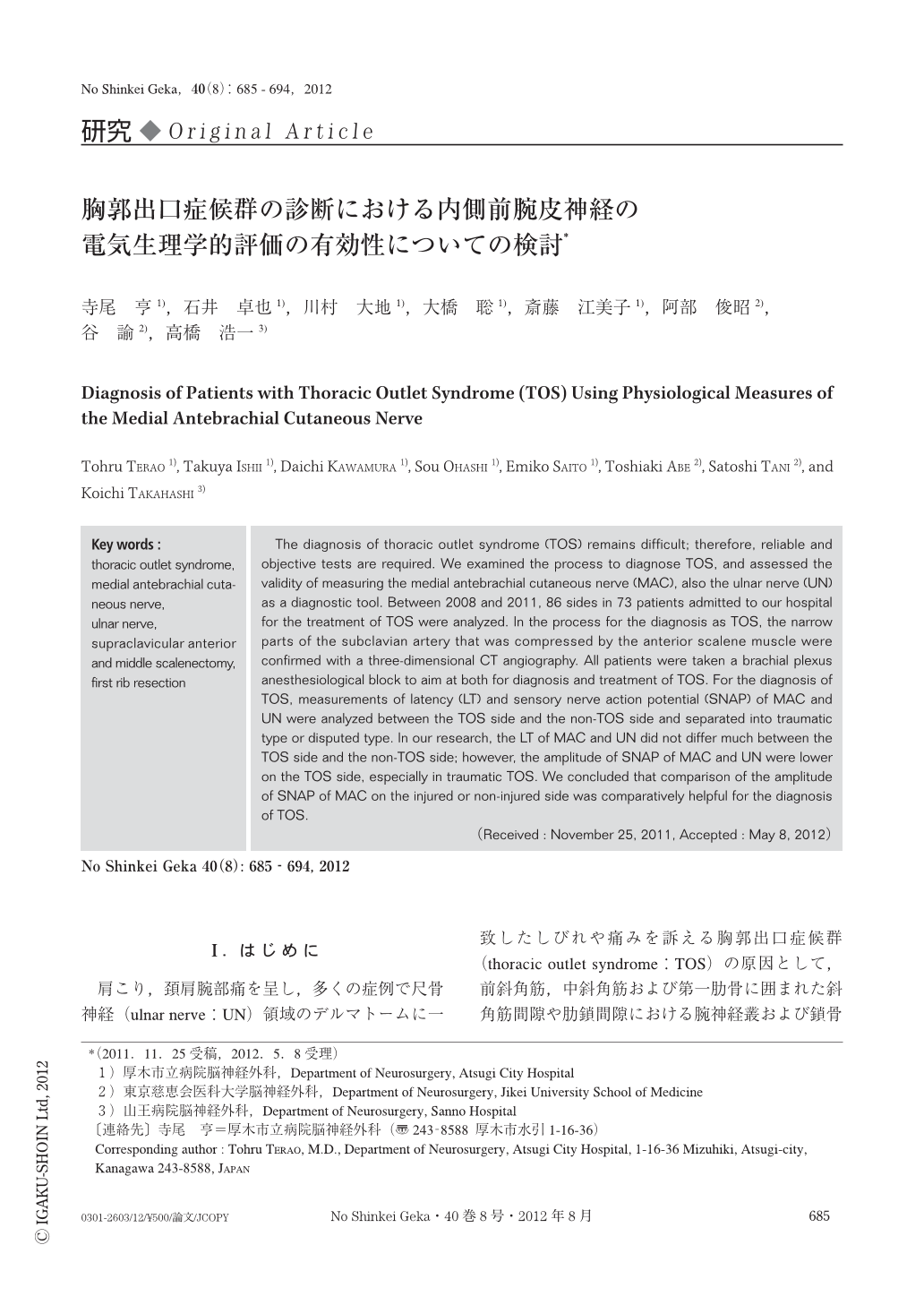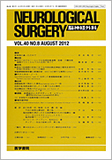Japanese
English
- 有料閲覧
- Abstract 文献概要
- 1ページ目 Look Inside
- 参考文献 Reference
Ⅰ.はじめに
肩こり,頚肩腕部痛を呈し,多くの症例で尺骨神経(ulnar nerve:UN)領域のデルマトームに一致したしびれや痛みを訴える胸郭出口症候群(thoracic outlet syndrome:TOS)の原因として,前斜角筋,中斜角筋および第一肋骨に囲まれた斜角筋間隙や肋鎖間隙における腕神経叢および鎖骨下動脈の絞扼などが関与している13,15,17).TOSの中には頚椎症性脊髄症や絞扼性末梢神経疾患との鑑別が困難なため,その診断に難渋し見逃される症例も存在する16).TOSは神経型(neurogenic TOS),血管型(vascular TOS)および混合型(combined TOS)に分類され,それぞれがさらに,原因不明(disputed TOS)または外傷型(traumatic TOS)に区分される18).この中で95%以上と最も頻度が高いneurogenic TOSの補助的診断方法として,C8,Th1神経根で形成される腕神経叢の内側束由来の感覚神経である内側前腕皮神経(medial antebrachial cutaneous nerve:MAC)の電気生理学的評価の有用性が提唱されている6,11).今回,われわれは当施設に入院し加療したTOS症例の電気生理学的評価の有効性を検証したため報告する.
The diagnosis of thoracic outlet syndrome (TOS) remains difficult; therefore, reliable and objective tests are required. We examined the process to diagnose TOS, and assessed the validity of measuring the medial antebrachial cutaneous nerve (MAC), also the ulnar nerve (UN) as a diagnostic tool. Between 2008 and 2011, 86 sides in 73 patients admitted to our hospital for the treatment of TOS were analyzed. In the process for the diagnosis as TOS, the narrow parts of the subclavian artery that was compressed by the anterior scalene muscle were confirmed with a three-dimensional CT angiography. All patients were taken a brachial plexus anesthesiological block to aim at both for diagnosis and treatment of TOS. For the diagnosis of TOS, measurements of latency (LT) and sensory nerve action potential (SNAP) of MAC and UN were analyzed between the TOS side and the non-TOS side and separated into traumatic type or disputed type. In our research, the LT of MAC and UN did not differ much between the TOS side and the non-TOS side; however, the amplitude of SNAP of MAC and UN were lower on the TOS side, especially in traumatic TOS. We concluded that comparison of the amplitude of SNAP of MAC on the injured or non-injured side was comparatively helpful for the diagnosis of TOS.

Copyright © 2012, Igaku-Shoin Ltd. All rights reserved.


